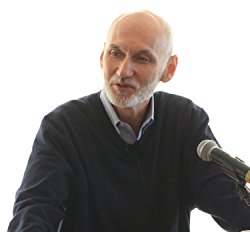
Children also consult secondary sources of information such as books and the internet in the classroom and with their parents at home. For example, if the children wonder what shoes are made of or how are they made, the teacher may arrange a field visit where the answer to these questions can be provided by an expert, in this case a shoe factory, the shoe repair man’s shop, or a shoe store. Rather than offering immediate answers to the questions children ask, teachers provide experiences through which children can discover the answers themselves through inquiry at field sites and interviewing experts. Projects emerge from the questions children raise and develop according to their particular interests. In early childhood, projects can be defined as open ended studies of everyday topics which are worthy of being included in an educational program. Project work presents many opportunities for young children’s ideas to be valued, their creativity to be encouraged, their interests to be nurtured, and for their learning needs to be met. Teachers take a strong guidance role in the process while children study topics with purpose and flexibility. The Project Approach offers teachers a way to develop in-depth thinking while engaging the hearts and minds of young children. This project made a difference at our school because the children's self-motivation, excitement, interest, willingness to work hard, and their display of creativity and problem-solving abilities amazed other teachers who were reluctant to try project work. They showed their eagerness to complete projects through the Project Approach and were intrigued and delighted to reach the culminative activity. Having completed my teaching practice at the University of the West Indies FDCRC, Trinidad and Tobago, I was exposed to a unique learning environment where I gained experience and hands on training with very intelligent early learners. Shanaz Dookie Commented on July 03, 2016.But then I get accused of not implementing the project approach and teaching from the front of the class. which at least gives my ECE singing experience and some vocal and musical security.

As a music teacher for early childhood educators, I feel a bit baffled by the project approach, since my biggest problem - as I perceive it - is that my students simply lack basic musical skills (for example, the ability to sing a simple childrens' song in a recognizable key in which young children can also sing) I still haven't come up with a solution that is non-frontal, like a choir director. Very helpful, especially the comment that this type of approach is not suitable in all learning situations. Elizabeth Neiman Commented on August 27, 2015.
#MANAGING TO LEARN SHOOK PDF HOW TO#
So to get ideas on how to change up so it's not repeated, really helped me to see a difference on how I teach from here on. But if you're teaching the same thing over and over you're not expanding your teaching. Year after year we the teachers have to teach the children.




 0 kommentar(er)
0 kommentar(er)
